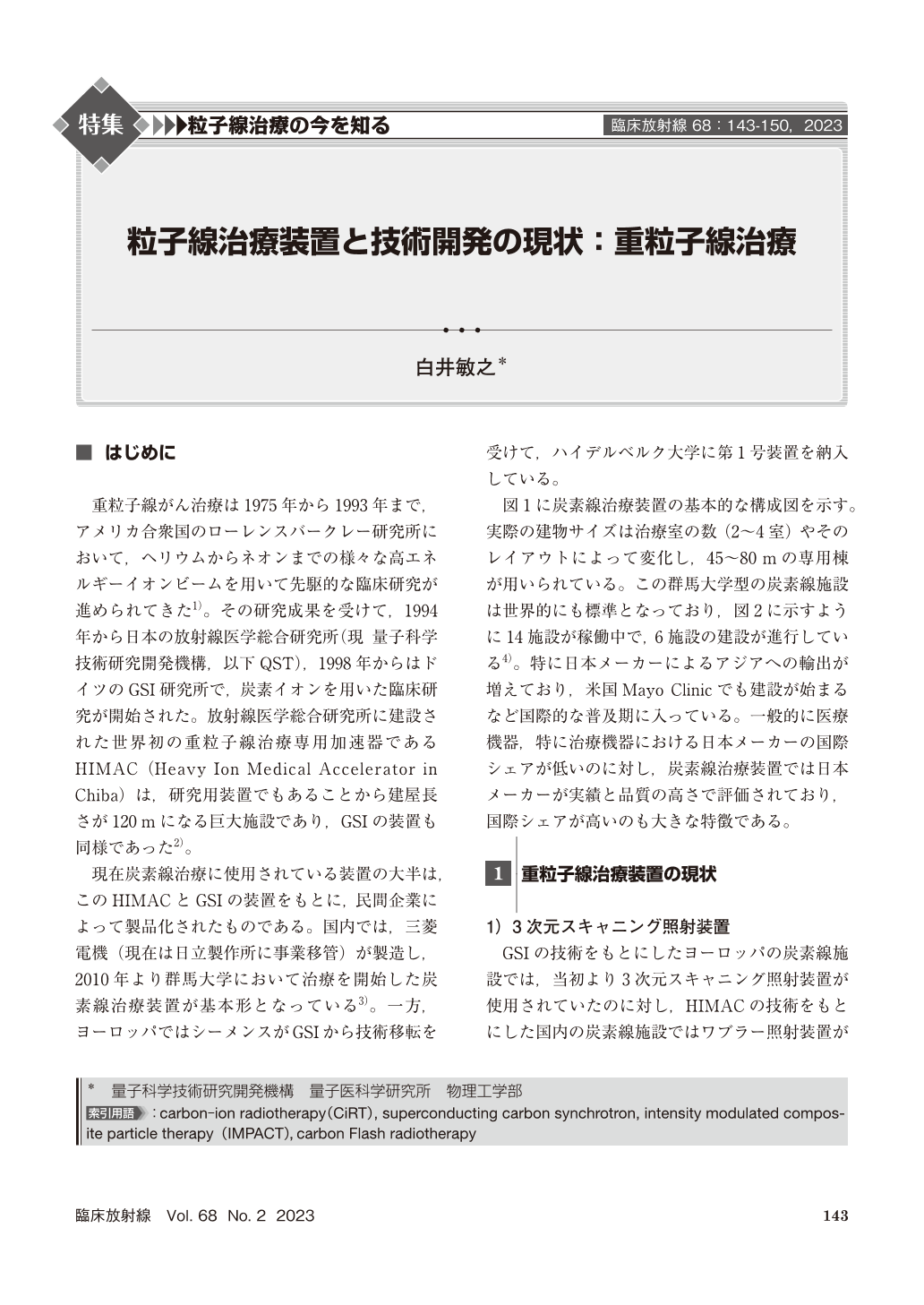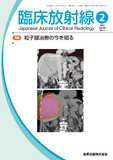Japanese
English
- 有料閲覧
- Abstract 文献概要
- 1ページ目 Look Inside
- 参考文献 Reference
重粒子線がん治療は1975年から1993年まで,アメリカ合衆国のローレンスバークレー研究所において,ヘリウムからネオンまでの様々な高エネルギーイオンビームを用いて先駆的な臨床研究が進められてきた1)。その研究成果を受けて,1994年から日本の放射線医学総合研究所(現 量子科学技術研究開発機構,以下QST),1998年からはドイツのGSI研究所で,炭素イオンを用いた臨床研究が開始された。放射線医学総合研究所に建設された世界初の重粒子線治療専用加速器であるHIMAC(Heavy Ion Medical Accelerator in Chiba)は,研究用装置でもあることから建屋長さが120mになる巨大施設であり,GSIの装置も同様であった2)。
There are 14 carbon-ion radiotherapy(CiRT)facilities in operation worldwide, and the number is increasing by about one per year. Recent facilities have standard features of modern radiotherapy device such as 3D-scanning beam delivery system and rotating gantries. However, the device miniaturization remains the most important issue for CiRT. Superconducting technologies have been developed for compact devices. Research and developments are also carried out to take advantage of the high biological effect, which is the most important feature of CiRT.

Copyright © 2023, KANEHARA SHUPPAN Co.LTD. All rights reserved.


